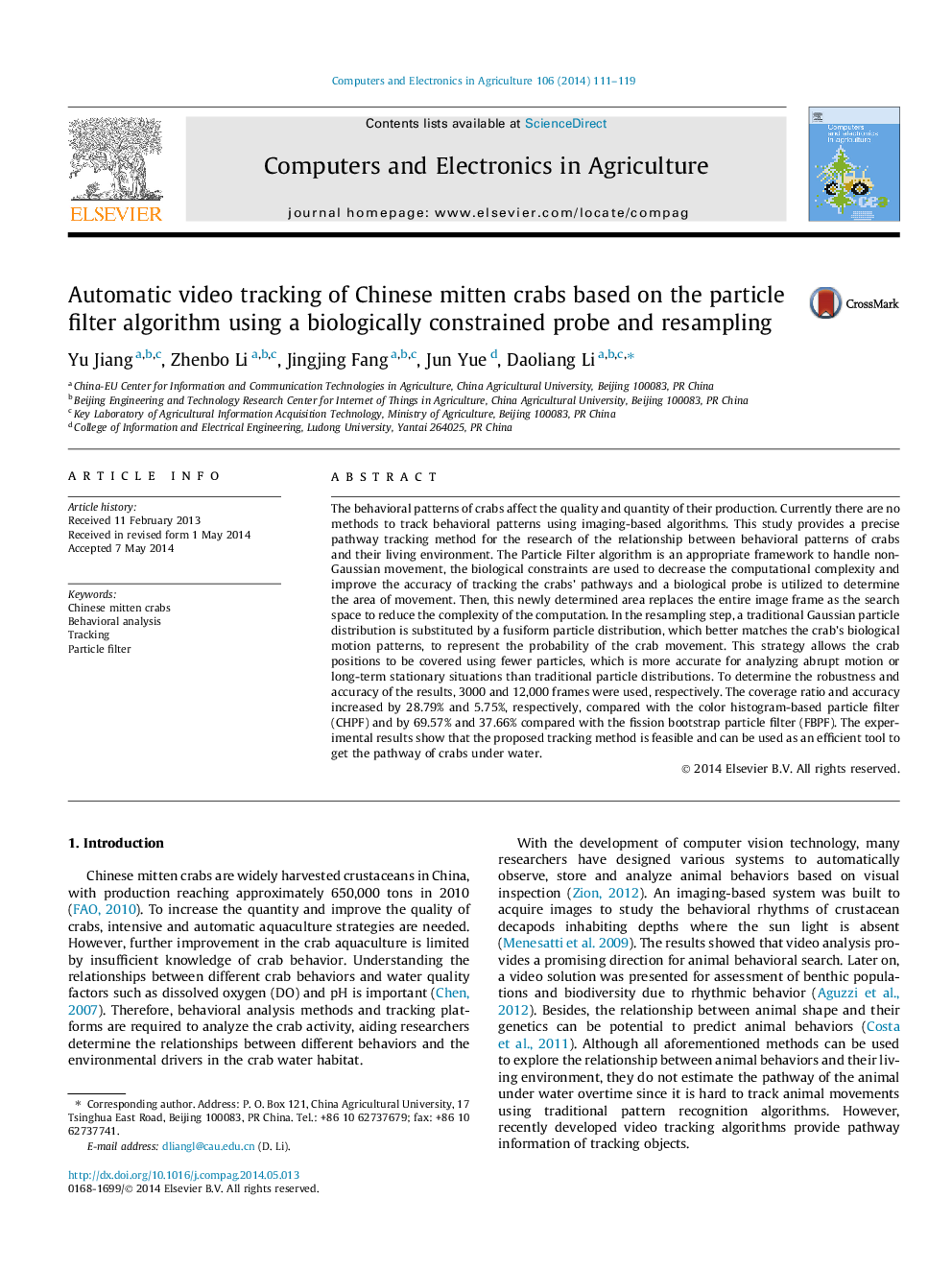| Article ID | Journal | Published Year | Pages | File Type |
|---|---|---|---|---|
| 84411 | Computers and Electronics in Agriculture | 2014 | 9 Pages |
•We design an automatic platform based on computer vision for behavior analysis of Chinese mitten crab.•We propose a particle filter with biological constraints (BCPF) for tracking Chinese mitten crab pathway.•Biological information is used as a probe to reduce the searching span of target to decrease the computational complexity.•Fusiform distribution substitutes traditional Gaussian distribution as resampling particle distribution.•The experimental results show that BCPF is more accurate than CHPF and FBPF.
The behavioral patterns of crabs affect the quality and quantity of their production. Currently there are no methods to track behavioral patterns using imaging-based algorithms. This study provides a precise pathway tracking method for the research of the relationship between behavioral patterns of crabs and their living environment. The Particle Filter algorithm is an appropriate framework to handle non-Gaussian movement, the biological constraints are used to decrease the computational complexity and improve the accuracy of tracking the crabs’ pathways and a biological probe is utilized to determine the area of movement. Then, this newly determined area replaces the entire image frame as the search space to reduce the complexity of the computation. In the resampling step, a traditional Gaussian particle distribution is substituted by a fusiform particle distribution, which better matches the crab’s biological motion patterns, to represent the probability of the crab movement. This strategy allows the crab positions to be covered using fewer particles, which is more accurate for analyzing abrupt motion or long-term stationary situations than traditional particle distributions. To determine the robustness and accuracy of the results, 3000 and 12,000 frames were used, respectively. The coverage ratio and accuracy increased by 28.79% and 5.75%, respectively, compared with the color histogram-based particle filter (CHPF) and by 69.57% and 37.66% compared with the fission bootstrap particle filter (FBPF). The experimental results show that the proposed tracking method is feasible and can be used as an efficient tool to get the pathway of crabs under water.
